Exploring the Rich History Behind 20 Traditional Chinese Food Dishes
Chinese cuisine is known for its vibrant flavors, diverse ingredients, and long history. Many traditional dishes have unique stories and cultural significance. Here’s a look at 20 traditional Chinese food dishes you should try, revealing the rich history behind each one.
1. Peking Duck
Originating from Beijing, Peking Duck is famous for its crispy skin and succulent meat. With roots dating back to the imperial era, this dish was once reserved for royalty. Today, it’s a must-try for anyone exploring Chinese cuisine.
2. Dim Sum
Dim Sum, which means “touch the heart,” has its origins in Cantonese tea culture. Traditionally served in small portions, dim sum showcases various dumplings and buns, perfect for sharing with friends and family.
3. Kung Pao Chicken
This spicy stir-fry dish hails from Sichuan province. It was named after a Chinese governor and combines chicken, peanuts, and vibrant vegetables, reflecting the bold flavors characteristic of Sichuan food.
4. Sweet and Sour Pork
A staple in Chinese restaurants worldwide, this dish blends the contrasting flavors of sweet and tangy. Its popularity soared in the 20th century, especially among Western audiences.
5. Mapo Tofu
A classic from Sichuan cuisine, Mapo Tofu features soft tofu in a spicy bean-based sauce. The dish’s name refers to the “pockmarked old woman” who is said to have created it, showcasing the cultural storytelling through food.
6. Xiaolongbao
These “soup dumplings” originate from Shanghai. Filled with savory broth and meat, they’re a fine example of how Chinese culinary techniques elevate simple ingredients into a delicious experience.
7. Chow Mein
Chow Mein, meaning “stir-fried noodles,” has a history rooted in Chinese immigrant communities. Today, it varies greatly across regions, offering a taste of local influences wherever you try it.
8. Hot Pot
Hot Pot is a communal dining experience that symbolizes togetherness. The dish has roots in various regions of China, each adding its unique style, be it spicy or savory.
9. Nian Gao
This sticky rice cake is traditionally served during the Lunar New Year, symbolizing growth and progress. Eating Nian Gao during festivities is believed to bring good luck for the year ahead.
10. Spring Rolls
Spring Rolls are a popular appetizer that dates back to the 4th century. The roll symbolizes wealth and prosperity, making it a festive favorite.
11. Wonton Soup
Wontons are dumplings filled with meat or vegetables, and wonton soup is a comforting dish enjoyed across China. Its history includes many regional variations, all reflecting local tastes.
12. Baozi
These steamed buns filled with meat or vegetables have been part of Chinese culture for centuries. They are believed to have originated during the Three Kingdoms period, making them a historical dish to savor.
13. Jiaozi
Jiaozi, or Chinese dumplings, are traditionally eaten during the Winter Solstice festival. Their shape is reminiscent of ancient silver ingots, symbolizing wealth and prosperity.
14. Zongzi
These sticky rice dumplings wrapped in bamboo leaves are commonly eaten during the Dragon Boat Festival. The dish has historical ties to Qu Yuan, a poet whose story is commemorated through this culinary tradition.
15. Congee
Congee, a rice porridge, serves as a comforting breakfast staple across China. Variants exist in every region, often topped with pickled vegetables or meats, reflecting personal and regional preferences.
16. Tea Eggs
Tea eggs are marbled eggs steeped in tea and spices. Originating from street vendors, they are now a popular snack that melds the comforting taste of tea with savory eggs, highlighting the fusion of flavors in Chinese culture.
17. Sichuan Peppercorn Chicken
This dish embodies the unique flavor profile of Sichuan cuisine. The numbing spice of sichuan peppercorns has been appreciated in Chinese cooking for hundreds of years, creating an unforgettable taste experience.
18. Scallion Pancakes
Known for their flaky texture, scallion pancakes are a savory treat that dates back to ancient China. Their simplicity allows the quality of the ingredients to shine.
19. Braised Pork Belly (Hong Shao Rou)
This dish features pork belly slow-cooked with soy sauce and spices, resulting in melting tenderness. Hong Shao Rou is a highlight of home-style cooking, often enjoyed during family gatherings.
20. Beef Noodle Soup
This comforting dish is rich with flavors and has numerous regional interpretations. Its history reflects the influence of nomadic cultures on Chinese culinary practices, evolving over centuries.
Each of these 20 traditional dishes offers a glimpse into the vast history and cultural significance of Chinese cuisine. They invite you to not just savor the flavors but also appreciate the stories that have shaped them. For more insights on traditional Chinese food, check out China Highlights and Chinese Fortune Calendar.
The Essential Ingredients in Traditional Chinese Cuisine
Traditional Chinese cuisine is known for its vibrant flavors, intricate techniques, and a deep connection to its cultural roots. The deliciousness of Chinese food comes not just from the cooking methods but also from a variety of essential ingredients that define the taste and uniqueness of each dish. If you’re eager to explore the essence of this culinary tradition, here’s a closer look at the ingredients that are vital in traditional Chinese cooking.
1. Rice
Rice is a staple that forms the base of many meals in China. It is versatile and can be paired with nearly any dish. Different regions in China prefer different types of rice. For example:
- Jasmine Rice: Mostly popular in southern China.
- Glutinous Rice: Used in desserts and special dishes, especially during festivals.
2. Noodles
Noodles come in various forms—thick, thin, steamed, or stir-fried, and they are essential across many Chinese cuisines. Wheat noodles are common in the north, while rice noodles are more popular in the southern regions.
3. Soy Sauce
This dark, salty sauce is a key ingredient in Chinese cooking. It adds depth and umami to dishes. There are different types, including:
- Light Soy Sauce: Used for seasoning.
- Dark Soy Sauce: Adds color and sweetness.
4. Ginger
Ginger adds a warm, spicy flavor that enhances both savory and sweet dishes. It is often used fresh, minced, or as a juice to elevate the taste of stir-fries, soups, and marinades.
5. Garlic
Garlic is another aromatic ingredient typical in Chinese cuisine. It provides a pungent, savory taste that complements a variety of proteins and vegetables.
6. Scallions
Scallions, or green onions, offer a mild onion flavor. They are often used as a garnish or in stir-fries, imparting a fresh taste and vibrant color to dishes.
7. Chili Peppers
For those who enjoy a little heat, chili peppers are a must. They come in various forms: fresh, dried, or as chili oil, and are commonly found in Sichuan dishes to create spicy flavors.
8. Five-Spice Powder
This blend typically includes star anise, cloves, Chinese cinnamon, Sichuan pepper, and fennel seeds. It is a go-to for marinades and braised dishes, providing a well-rounded flavor profile.
9. Tofu
As a primary protein source in many vegetarian dishes, tofu is versatile and absorbs flavors well. It can be prepared in various ways: stir-fried, steamed, or braised.
10. Bok Choy
Bok choy, a type of Chinese cabbage, is commonly used in stir-fries and soups. It’s crunchy texture and mild taste make it a popular choice among many dishes.
11. Sesame Oil
This aromatic oil is used for both cooking and as a finishing oil. It provides a nutty flavor and is frequently drizzled over dishes before serving for an enriched taste.
12. Rice Vinegar
Rice vinegar is milder and slightly sweet compared to other vinegars. It’s an essential ingredient in various dressings and pickling processes.
13. Bamboo Shoots
These tender shoots are often used in stir-fries and salads. Their crunchy texture adds an interesting contrast to dishes.
14. Peanut Sauce
Popular in dish variations, peanut sauce offers a creamy, nutty flavor that pairs well with grilled meats and in noodle dishes.
15. Fermented Black Beans
These add a salty, earthy flavor to many dishes, especially stir-fries and braises. They are often used in sauces for additional depth.
16. Hot Mustard
This condiment adds an intense flavor to dishes and is often served as an accompaniment with dim sum.
17. Duck Sauce
This sweet-sticky sauce is usually served as a dipping accompaniment, enhancing the flavor of fried items.
18. Dried Mushrooms
Dried shiitake mushrooms offer a deep, earthy flavor, making them a popular ingredient in soups and braised dishes.
19. Lotus Root
With its unique shape and crunchy texture, lotus root is often used in stir-fries and salads, bringing both aesthetics and flavor.
20. Cilantro
This herb offers a fresh flavor that can brighten up many dishes. It’s often used as a garnish or in sauces to add a pop of color and taste.
Exploring traditional Chinese cuisine is an exciting culinary adventure. Each ingredient plays a significant role, shaping the flavors and authenticity of each dish. For more in-depth insights and recipes, check out resources like Chinese Food Wonders, and The Kitchn. Enjoy your journey into the delightful world of Chinese cooking!
Regional Variations: How Geography Influences Chinese Food
Chinese cuisine is a tapestry woven from diverse regional influences, with geography playing a crucial role in shaping its various styles and flavors. Each province in China boasts its own unique ingredients, cooking techniques, and cultural preferences, creating a rich culinary landscape. Understanding how geography influences Chinese food provides insight into the complexity and variety that defines this ancient cuisine.
China’s vast territory spans many climates, terrains, and landscapes. These geographical features not only determine what ingredients are locally available but also influence cooking methods and flavor profiles. Major regional cuisines can be broadly categorized into eight styles, often referred to as “The Eight Cuisines of China.” They include:
- Sichuan Cuisine: Known for its bold and spicy flavors, Sichuan dishes often incorporate ingredients like Sichuan peppercorn, garlic, and chili peppers. The geographic location in the south-central region of China contributes to its warm climate, allowing for a variety of spicy crops to flourish.
- Cantonese Cuisine: Hailing from Guangdong province, Cantonese food is characterized by its fresh ingredients and Cantonese roasting techniques. The maritime geography offers abundant seafood, paired with a preference for soy sauce-based marinades and steaming, which retains the natural flavors of the food.
- Shandong Cuisine: Originating from the northeastern coastal regions, Shandong cuisine emphasizes freshness and sharp flavors, including the use of vinegar. The province’s geography provides excellent seafood and grains, leading to a reliance on flour-based dishes like dumplings.
- Jiangsu Cuisine: Known for its emphasis on presentation and sweetness, Jiangsu dishes often employ a variety of cooking methods, including braising and stewing. The province’s proximity to waterways supplies freshwater fish and aquatic vegetables, enhancing its culinary repertoire.
- Zhejiang Cuisine: Located along the eastern coast, Zhejiang cuisine is recognized for its delicate flavors and emphasis on seasonal ingredients. The region’s lush landscape offers a variety of vegetables and freshwater fish, contributing to its light, refined dishes.
- Fujian Cuisine: Influenced by its mountainous terrain and coastal access, Fujian food is known for its umami-rich broth and unique flavors. Techniques such as braising and stewing are common, along with the use of a wide range of mushrooms and seafood.
- Hunan Cuisine: Similar to Sichuan in its spiciness, Hunan cuisine utilizes smoked, cured, and pickled ingredients, reflecting its agricultural traditions. The province’s humid climate supports the cultivation of chili peppers and various herbs.
- Xinjiang Cuisine: Drawing from the region’s ethnic diversity and arid climate, Xinjiang food encompasses Central Asian influences, showcasing dishes like lamb skewers and hearty naan bread. The use of spices and grilling techniques highlights the culinary uniqueness of this area.
In addition to these eight cuisines, various local specialties thrive within each region based on seasonal availability and cultural practices. For example, during the winter months, Northern China emphasizes warm and hearty meals such as dumplings and noodle dishes, leveraging wheat as a staple. Meanwhile, in Southern regions, lighter meals such as rice and fresh vegetables dominate the table.
The practice of using locally available ingredients shapes not only what people eat but also how they eat it. In coastal provinces, seafood plays a predominant role, while mountainous areas focus on meats and root vegetables. This practice enhances the healthfulness of meals, as the people adapt to their environments.
Furthermore, the cultural significance of certain dishes can be tied to geography. For instance, rice is a staple in southern Chinese cuisines, whereas wheat-based products like noodles and buns are more typical in the north. This geographic distinction can reflect agricultural practices and the climate’s suitability for growing different crops.
Dining experiences are also influenced by geography and local traditions. In rural areas, family-style meals encourage togetherness and community. In contrast, urban settings often prioritize speed and convenience, manifesting in takeaway options and quick-service restaurants.
To explore the fascinating world of regional Chinese cuisines and their dependencies on geography, further resources can be found at:
The geography of China does not just dictate the ingredients used in cooking; it is a vital aspect of the culture that shapes the culinary identity of each region. Exploring how geography influences Chinese food enhances appreciation of this diverse and intricate cuisine.
The Cultural Significance of Food in Chinese Celebrations
Food plays an essential role in the fabric of Chinese culture, especially during celebrations. Each dish served during festivities is loaded with significance, representing wishes for prosperity, health, and happiness. Through the art of cooking and sharing meals, the essence of Chinese traditions comes to life.
Significance of Staples
In Chinese culture, certain foods are staples during major celebrations, embodying various meanings:
- Rice: A symbol of fertility and wealth, rice is most commonly served at every meal.
- Noodles: Representing longevity, long noodles are a must on birthdays and the New Year.
- Dumplings: Resembling ancient gold or silver ingots, dumplings are a representation of wealth and prosperity.
- Fish: The word for fish, “yú,” sounds like the word for abundance, making fish a staple during celebrations, especially during the Lunar New Year.
Cultural Rituals and Their Foods
Every Chinese celebration is rooted in cultural history, and specific foods accompany traditional practices.
Spring Festival (Lunar New Year)
This is the most significant celebration in China, marking the start of a new year. Foods consumed during this time include:
- Long Noodles: Eaten to symbolize a long life.
- Dumplings: Often filled with ingredients representing wealth.
- Sticky Rice Cake (Nian Gao): The pronunciation of “nian” resembles “year,” signifying progression.
Mid-Autumn Festival
Also known as the Moon Festival, this celebration revolves around family reunions and harvest. Foods here include:
- Mooncakes: Round pastries symbolizing completeness, traditionally filled with lotus seed paste or red bean.
- Pomelo: Its round shape is a symbol of good fortune.
Dragon Boat Festival
This celebration is commemorated with the consumption of zongzi—sticky rice dumplings wrapped in bamboo leaves. Each zongzi carries its meaning:
- Protection: It is believed that eating zongzi can ward off evil spirits.
- Fortune: Specific fillings are chosen for good luck.
Regional Variations
China’s vast landscape leads to diverse culinary practices. During celebrations, regional specialties often come to the forefront:
| Region | Traditional Celebration Dish |
|---|---|
| Shandong | Sweet and Sour Carp |
| Sichuan | Spicy Fish Head Stew |
| Guangdong | Roast Suckling Pig |
| Jiangsu | Mooncakes with Lotus Paste |
Food as a Symbol of Unity
During celebrations, the act of sharing meals emphasizes family values in Chinese culture. Gathering around a table signifies unity and togetherness. Each dish served fosters conversations that strengthen bonds among family members. For instance, the round table arrangement epitomizes equality and communal spirit.
Religious and Spiritual Connections
Food also plays a role in spiritual gatherings. During religious observances, certain dishes are favored to honor ancestors. For example, during Qingming Festival, families prepare foods like qingming cakes to honor departed souls.
The cultural significance of food in Chinese celebrations offers a glimpse into the rich tapestry of traditions. It fosters connection among families and honors cultural history and beliefs. Each dish is more than just food; it’s an expression of love, respect, and hope for the future.
To learn more about the diverse world of Chinese cuisine and its cultural importance, visit China Food Network or explore Chinese Food Culture.
Cooking Techniques Unique to Traditional Chinese Dishes
Chinese cuisine is rich with intricate techniques that reflect its diverse history and culture. Understanding these methods can enhance your cooking experience and appreciation for traditional dishes. Here are some unique cooking techniques prominently used in traditional Chinese cooking.
Stir-Frying
One of the most well-known Chinese cooking techniques, stir-frying involves cooking food quickly over high heat in a small amount of oil. This method helps retain the food’s color, texture, and nutrients. The key to successful stir-frying is to have all ingredients prepped and ready to go, as the process moves quickly.
Steaming
Steaming is a gentle cooking method that preserves the flavor and nutrients of food, making it a healthy option. Traditional bamboo steamers are widely used in Chinese cooking. Foods like dumplings, fish, and vegetables are placed in the steamer, allowing steam to cook them evenly. This technique enhances the natural taste of ingredients.
Deep-Frying
Deep-frying is another popular technique where food is submerged in hot oil. This method creates a crisp exterior while keeping the inside moist. Dishes like spring rolls and crispy duck are famous for their deep-fried textures. It’s essential to control the oil’s temperature to achieve the perfect crunch without overcooking the food.
Red Cooking (Braised Cooking)
Red cooking, or braising, is a slow-cooking technique that often uses soy sauce, rice wine, and spices to flavor the meat. The process begins with searing the meat, followed by simmering it in liquid for an extended period. This technique makes dishes like red braised pork belly incredibly tender and flavorful.
Blanching
Blanching is the process of briefly boiling food and then plunging it into ice water to stop the cooking process. This technique is commonly used for vegetables like bok choy and broccoli. Blanching preserves vibrant colors and crisp textures, making your dishes visually appealing and fresh.
Wok Cooking
The traditional Chinese wok is incredibly versatile. It can be used for frying, steaming, and even stewing. Its rounded shape allows for even heat distribution, and it requires less oil than a flat pan. Using the wok effectively can enhance the flavor of your dishes through high-heat cooking.
Sautéing
Sautéing involves cooking small pieces of food quickly in a small amount of fat. This method is similar to stir-frying but often uses lower heat and works better for dishes with herbs or delicate vegetables. It’s a great way to infuse flavors without overpowering the ingredients.
Smoking
Smoking is a unique technique used to impart a distinct flavor to meat, fish, or even vegetables. In Chinese cooking, techniques like tea smoking involve using leaves or herbs to create a fragrant smoke. This method can transform ordinary dishes into something extraordinary with rich, complex flavors.
Grilling
Grilling is particularly popular in northern China, especially for meats. This technique often involves marinating the food in flavorful sauces before grilling it over high heat. Popular grilled dishes include lamb skewers and various types of barbecued meats.
Fermenting
Fermenting is foundational in Chinese cooking. Techniques like making fermented tofu or pickled vegetables add deep flavors and unique textures to dishes. The fermentation process encourages beneficial bacteria, enhancing the nutritional value of the food.
Exploring these techniques will open up a new world of flavors and sensations in your cooking. Whether you are a seasoned chef or a kitchen novice, incorporating these methods into your recipes can elevate your culinary skills and bring a taste of China to your table.
For more information and resources on traditional Chinese cooking, check out China Highlights and The Woks of Life.
Health Benefits of Key Ingredients in Chinese Cuisine
Chinese cuisine is not just a treat for the taste buds; it also offers a wealth of health benefits through its key ingredients. The diverse range of herbs, spices, vegetables, and proteins used in traditional Chinese dishes contribute to health in various ways. Understanding these health benefits can help you appreciate each dish even more.
Ginger
Ginger is a staple in many Chinese dishes and is well-known for its medicinal properties. This root is widely recognized for its:
- Digestive Health: Ginger alleviates nausea and may improve digestion.
- Anti-Inflammatory Effects: It contains compounds called gingerols, which reduce inflammation in the body.
- Immune Support: Ginger is rich in antioxidants, helping boost your immune system.
Garlic
Garlic is another common ingredient that not only enhances flavor but also provides numerous health benefits:
- Heart Health: Garlic can lower blood pressure and cholesterol levels, promoting a healthier heart.
- Antimicrobial Effects: Its natural compounds have antibacterial and antiviral properties.
- Immune System Booster: Regular consumption may help you fend off illnesses.
Bok Choy
Bok choy, a type of Chinese cabbage, is a nutritious vegetable packed with health benefits:
- Rich in Nutrients: It is high in vitamins C, A, and K, as well as minerals like calcium.
- Bone Health: The vitamin K in bok choy contributes to improved bone density.
- Antioxidant Properties: It fights free radicals, potentially lowering the risk of chronic diseases.
Chinese Broccoli (Gai Lan)
This leafy green vegetable is known for its robust flavor and health advantages:
- High Fiber: Gai lan is a good source of dietary fiber, aiding in digestion.
- Vitamin Rich: It offers a range of vitamins, especially vitamin C and folate, excellent for overall health.
- Pacifying Inflammation: Due to its antioxidant content, it may help reduce inflammation.
Tofu
Tofu, a popular protein source in Chinese dishes, made from soybeans, is beneficial for health:
- Plant-Based Protein: It’s an excellent choice for vegetarians and vegans.
- Heart Health: The isoflavones in tofu can lower cholesterol levels.
- Bone Strength: Tofu is rich in calcium, which improves bone strength.
Green Tea
Green tea is famously consumed in China and known for its wide range of benefits:
- Antioxidants: It’s rich in catechins, which help fight free radicals in the body.
- Weight Loss Aid: Green tea can boost metabolism and support weight loss.
- Heart Health: Regular consumption may help reduce the risk of developing heart disease.
Chili Peppers
These flavorful peppers not only add spice but also health advantages:
- Boost Metabolism: Capsaicin in chili peppers can speed up your metabolism.
- Pain Relief: It has been found to alleviate pain by blocking pain receptors.
- Vitamin A: Chili peppers are high in vitamin A, contributing to better vision.
Lotus Root
Lotus root is both crunchy and nutritious, making it a unique ingredient:
- Rich in Vitamins: It contains vitamins C and B, essential for skin and overall health.
- Supports Blood Circulation: Lotus root can stimulate blood flow.
- High in Fiber: It aids in digestive health and regularity.
These key ingredients into your Chinese meals not only enhances flavor but also contributes to overall wellness. Don’t hesitate to explore traditional dishes like Kung Pao Chicken, Hot and Sour Soup, or Ma Po Tofu, which feature these nutritious elements. The blend of flavors and health benefits makes Chinese cuisine not just a culinary delight but a wholesome experience for the body and mind.
Tips for Making Authentic Chinese Dishes at Home
Creating authentic Chinese dishes at home can be a rewarding adventure filled with rich flavors and cultural experiences. Here are some tips to help you get started on your culinary journey.
Invest in Quality Ingredients
The foundation of any great dish is quality ingredients. When making Chinese food, look for these essentials:
- Fresh produce: Always choose fresh vegetables, herbs, and meats for the best flavors.
- Authentic sauces: Use traditional sauces like soy sauce, oyster sauce, and hoisin sauce to enhance your dishes.
- Specialty items: Find unique ingredients like dried mushrooms, Sichuan peppercorns, and rice vinegar at local Asian markets or online stores.
Master Cooking Techniques
Chinese cuisine is known for its diverse cooking methods. Here are a few techniques to practice:
- Stir-frying: This quick cooking method requires a hot wok and constant stirring. It helps maintain the texture and nutrients of ingredients.
- Steaming: A vital technique for dishes like dumplings and fish, steaming locks in moisture and flavor without adding extra fat.
- Braising: A method that combines cooking slowly in a flavorful liquid, perfect for tenderizing tough cuts of meat.
Understand Flavor Profiles
Different regions of China have distinct flavor profiles. Familiarize yourself with these to enhance your dishes:
| Region | Flavor Profile |
|---|---|
| Sichuan | Spicy and numbing from Sichuan peppercorns. |
| Cantonese | Light and sweet flavors, often emphasizing fresh ingredients. |
| Shandong | Salty and savory, with a focus on seafood. |
| Jiangsu | Delicate and soft flavors, often employing braising. |
Embrace the Art of Balance
Chinese cuisine emphasizes balance in every dish. Here are a few tips to achieve this:
- Texture: Combine different textures such as crispy, chewy, and soft ingredients to make your meal exciting.
- Colors: Use a variety of colorful ingredients to make your dishes visually appealing and nutritious.
- Taste: Aim to balance sweet, sour, salty, and umami flavors in every dish for a harmonious meal.
Learn Key Dishes
To gain confidence, start cooking a few staple Chinese dishes. A few classics include:
- Fried Rice: A versatile dish that allows you to use leftover ingredients.
- Kung Pao Chicken: A spicy stir-fry dish that showcases balancing flavors.
- Sweet and Sour Pork: A staple that includes a balance of tangy and sweet elements.
Practice, Practice, Practice
Like any skill, cooking takes practice. Don’t get discouraged by initial failures. Learn from each attempt and enjoy the process. Each time you try a recipe, you’ll become more familiar with techniques and flavors.
Engage with the Community
Expand your knowledge and skills by engaging with others who love Chinese cuisine. Consider joining online cooking classes or forums. Websites like China Sichuan Food and The Woks of Life offer fantastic resources for recipes and tips.
Try Regional Specialties
Exploring different regional specialties can be a fun way to broaden your knowledge of Chinese cooking. Not every dish is available in restaurants, so making them at home can be special. A few dishes to consider include:
- Peking Duck: A classic with crispy skin and succulent meat.
- Mapo Tofu: A spicy and numbing delicacy from Sichuan.
- Char Siu: Cantonese BBQ pork with a sweet glaze.
Cooking authentic Chinese food at home is not only about the recipes; it’s about enjoying the process and exploring the incredible flavors of this cuisine. Armed with these tips, you’re ready to create delicious dishes that can impress your family and friends. Don’t hesitate to experiment, and most importantly, have fun in the kitchen!
Key Takeaway:
The rich tapestry of Chinese cuisine unfolds through the exploration of 20 traditional Chinese food dishes, each telling a story of history, culture, and regional diversity that is unparalleled. At its core, Chinese food is a reflection of the nation’s vast geographic landscape, with variations arising from local ingredients, climate conditions, and cultural customs. From the spicy dishes of Sichuan, where chili peppers reign, to the delicate flavors of Cantonese dishes that prioritize freshness and subtlety, the geography of China shapes the palate of its cuisine.
Underlying this diverse culinary expression are essential ingredients that form the backbone of traditional Chinese cooking. Staples such as rice, soy sauce, and a variety of fresh vegetables make these dishes not only flavorful but also nutritious. Understanding these key ingredients can significantly enhance your cooking, allowing you to create delicious meals full of character.
Food holds a special significance in Chinese celebrations, often symbolizing unity, prosperity, and good fortune. Taking part in feasts during festivals like the Chinese New Year offers an authentic glimpse into the cultural importance of food in fostering community ties and passing down traditions.
Moreover, the techniques employed in traditional Chinese cooking, such as stir-frying and steaming, reveal a commitment to preserving nutrients while maximizing flavors. These methods not only enhance the taste of the dishes but also contribute to health benefits, thanks to the high nutritional profile of many ingredients used—think of ginger, garlic, and various vegetables, all known for their health-promoting properties.
For those who wish to bring the flavors of China into their own kitchens, this article offers practical tips for making authentic Chinese dishes at home. Engaging with Chinese cuisine can be a rewarding experience not just in terms of flavor, but also as a way to appreciate a culture rich in history and tradition. So, dive into this culinary journey, as there’s a world of delicious experiences awaiting you in the heart of traditional Chinese food.
Conclusion
Chinese cuisine offers a vibrant tapestry of flavors, traditions, and history that captivates food lovers around the globe. Each of the 20 traditional dishes we’ve explored holds a rich narrative, reflecting the deep cultural significance of food in Chinese celebrations and daily life. The essential ingredients — from fragrant spices to fresh vegetables — not only enhance taste but also contribute to the health benefits that many of these dishes provide.
Regional variations play a vital role in defining what Chinese cuisine means. From the bold, spicy flavors of Sichuan to the delicate, subtle tastes of Cantonese cooking, geography is a key factor that shapes culinary traditions, creating a diverse heritage that varies from one province to another. Moreover, cooking techniques like stir-frying, steaming, and braising bring unique textures and aromas that define the overall dining experience.
Making authentic Chinese dishes at home can be rewarding. With the right tips and techniques, you can recreate the magic of these traditional dishes in your own kitchen. Understanding the essential ingredients and the methods behind their preparation opens up a world of creativity and experimentation.
As you embark on your culinary journey, remember that each dish tells a story, connecting you to centuries of tradition and heritage. Embrace the flavors, savor the experiences, and let the journey of traditional Chinese cuisine enrich your palate. Whether you choose to dine at a local restaurant or try your hand at cooking, the spirit of Chinese food is an invitation to explore and enjoy the richness of culture through every bite.
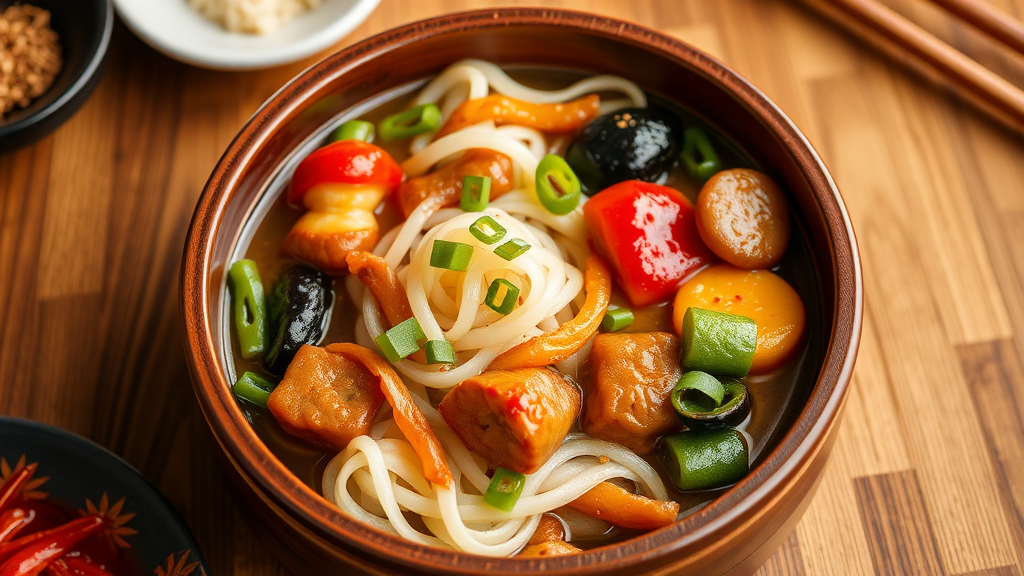

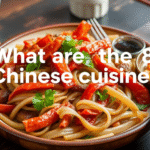
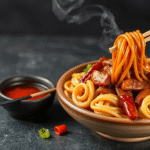
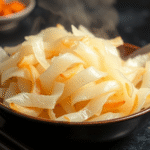
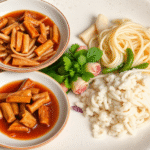
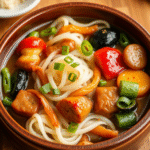
Leave a Reply